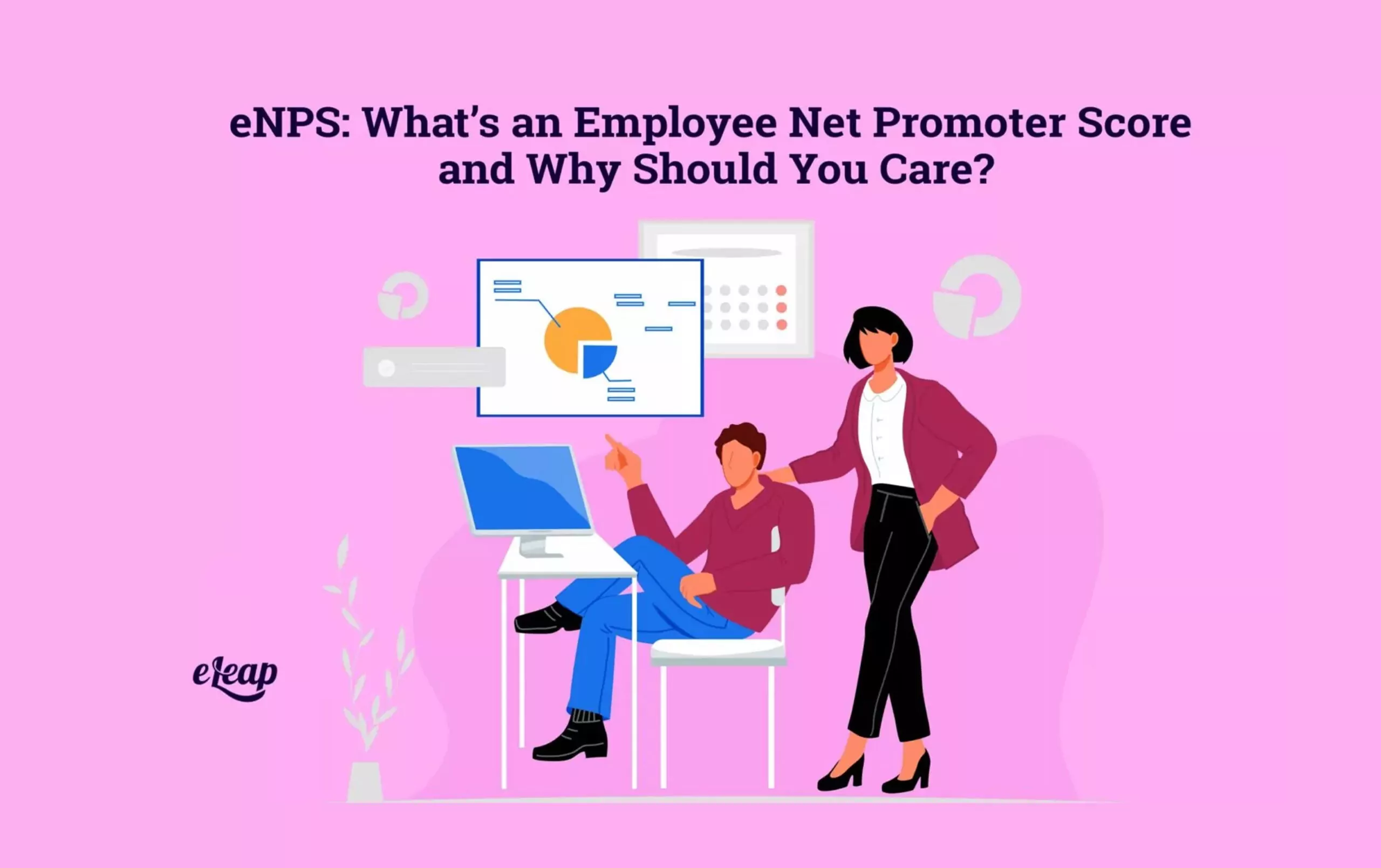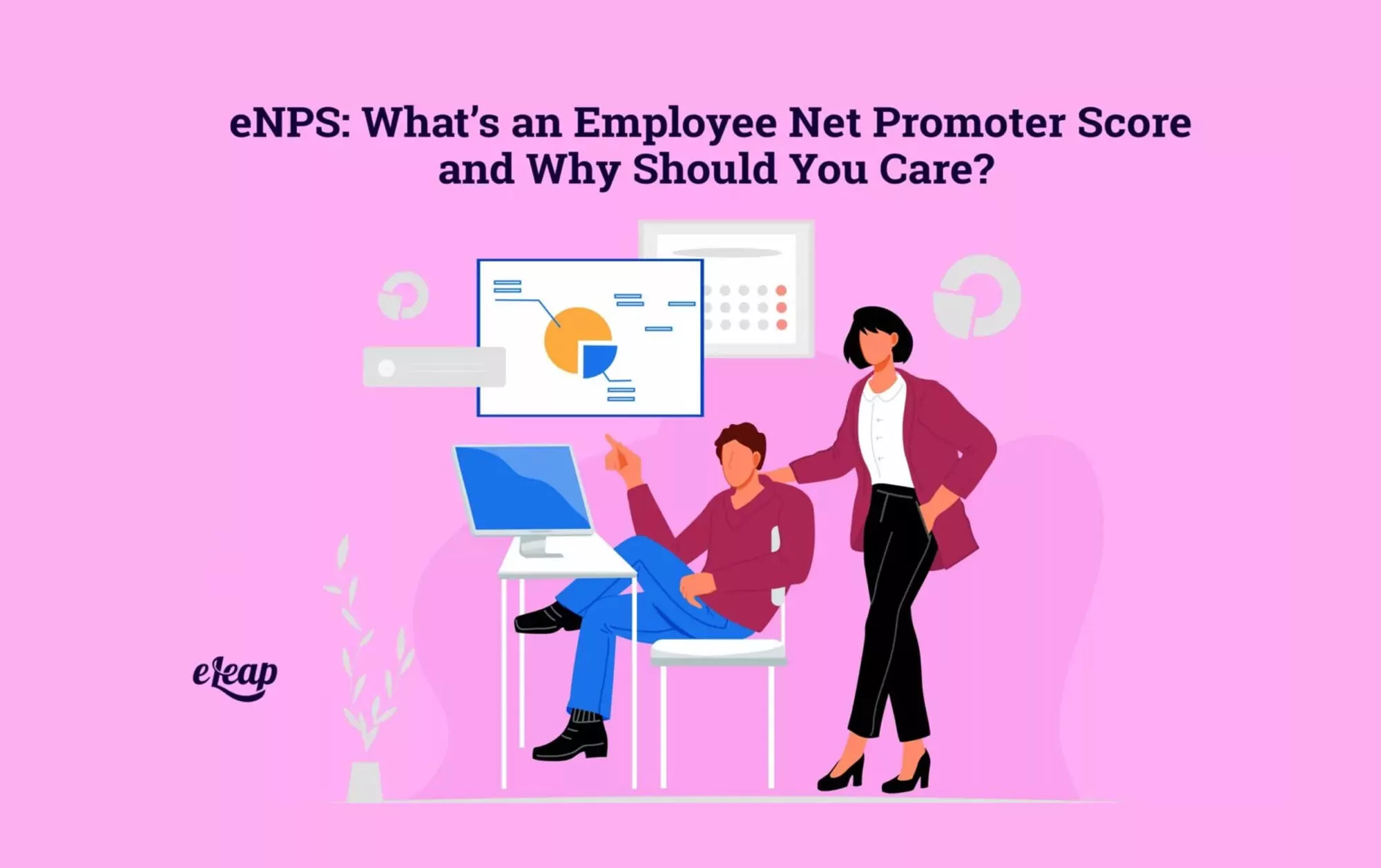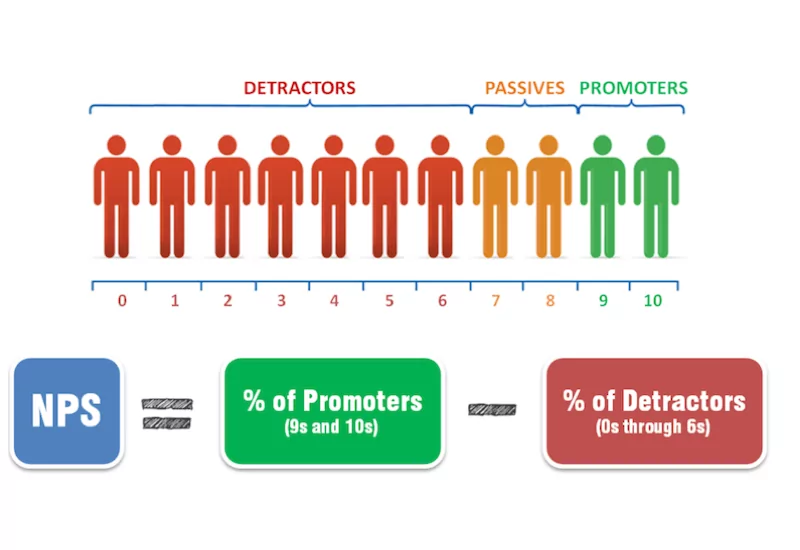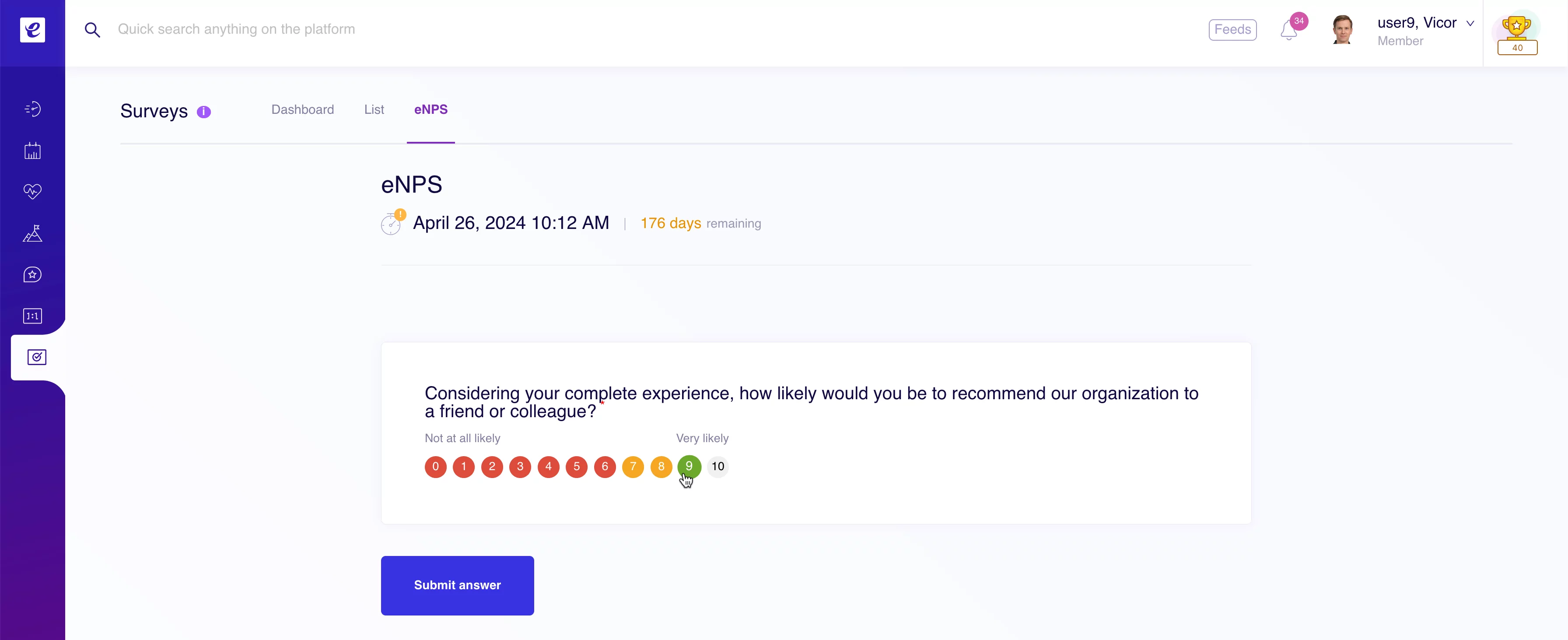eNPS: What’s an Employee Net Promoter Score and Why Should You Care?

eNPS stands for Employee Net Promoter Score. Employee Net Promoter is a rating that’s used to measure employee satisfaction and loyalty to an organization. This has been employed since 2003 and is typically based on one single question: Explore how eLeaP’s Performance Management Platform can simplify evaluations, boost productivity, and drive measurable results.
“How likely are you to recommend this business/organization to a friend/family?”
eNPS originated from the commercial space, where it is called Net Promoter Score or NPS. NPS is used for everything from retailers and restaurants to doctors, mental health professionals, lawyers, and everyone in between. For the organization version called Employee Net Promoter, it is a survey that makes sense since employee engagement and retention are at the top of the list for most companies. Understanding how people view businesses and organizations and whether they’d recommend such organizations to their friends and family is a simple but powerful way to learn about how loyal and happy the employees or workers are. Understanding how to use Employee Net Promoter can significantly improve your employee productivity, interactions, and more.

There’s a lot that goes into determining the Employee Net Promoter. Done right, organizations can also gather other important information from that score. First, let’s take a look at how eNPS is calculated so that you know exactly what you’re looking at.
How is Employee Net Promoter calculated?
When employees and other company people are asked to answer the question, “How likely are you to recommend this business/organization to a friend/family?” they are also given a zero-to-ten (or some use 0-100) scale ranging from not at all likely to extremely likely, allowing them to rate your organization accordingly. Of course, averaging the scores isn’t quite good enough—there’s more to employee Net Promoter Scores than just that. Instead, the linear zero-to-ten scale is divided into three categories: promoters, passive responders, and detractors.
On this same scale, zero through six would rate someone as a detractor. Seven and eight are reserved for passive, or neutral respondents, and nine and 10 are for those who are considered promoters. We’ll talk more about each of them later, but understanding the categories is critical to calculating your eNPS. Check out the graphic below for a better idea of what this looks like on an employee survey.

Image Courtesy of EmployeeConnect
To calculate the ratings of your respondents, you will ignore the passive respondents. Then, you will take the percent of people who are promoters and subtract the percent of detractors from that. For example, if you have 50 promoters and 45 detractors, your Net Promoter Score would be five. The rating can range from -100 to 100, but most companies never come even close to that. Some people say that “anything above zero” is considered a good score.
Of course, if you utilize modern tools like the eLeaP Performance Management Platform for monitoring and managing your customer satisfaction surveys, you won’t have to do the calculations by hand. It can be helpful to know, but there’s little room for application if you choose the right digital tools.
Let’s discuss the various categories mentioned above and what each means to your business.
Categories: Promoters, Detractors, and Passive Responders
Promoters are employees who have scored a nine or 10 rating. They are the company’s best advocates, and they are a huge asset to the organization in many ways. They are more likely to share jobs with friends, offer referrals and networking assistance, and more. These employees can essentially be your built-in brand ambassadors, and you should try to gather as many of them as you can. This survey and score is just one way to do that.
Detractors are the ones who are unhappy, and sometimes severely so. They are the employees who will complain to family, friends, and ultimately, anyone who’ll listen. They account for more than half of the scale, so it’s important to keep your eye on this number. If you’ve got more detractors than promoters, your employee NPS will be negative, and that’s never good.
Passive employees are the ones who score between seven and eight and are considered neutral for the most part. They may enjoy working for you, but not enough to actively tell others. They also don’t hate the job, but they wouldn’t be opposed to something better coming along. Trying to understand this group’s feedback will help you learn how you can bump them up to promoter status and increase your eNPS.
This information can help you identify where changes need to be made, what ways you could potentially sway detractors or passive respondents into becoming promoters, and more. The higher your score, the better you’re doing with employee engagement and culture, but as with anything, there’s always room for improvement.
What Is a “Good” Score?
As mentioned, the scale range is ultimately unrealistic for most businesses—getting even close to 100 is rare, and many people think that anything better than zero is “good,” as we mentioned above. According to the experts, though, it’s important for companies to check their internal benchmarks against the competition, as well as to consider the state of the economy and the business.
It’s far better to ask what a good score is based on the current status of the company. Several factors influence whether an employee would be a promoter of the business, and some of those are beyond the reach and control of HR and others in the organization. Cultural groups, industries, and other factors affect how people rate an organization:
- Slow vs. increasingly rapid growth
- The global and regional economy
- Private vs. public companies
- If the organization is overhauling its leadership
Essentially, you have to look at your organization first, second, and every time until you get the answers that you need. Compare scores across departments or periods of business, and that can provide a more actionable plan to improve engagement, as well as where things currently stand. After all, your eNPS score is useless if you can’t gain any valuable insights on improving the employee experience.
Get the eNPS First
This is an important note for those who are using that famous eNPS question as part of a larger employee survey. Always, always make sure that question is the first thing that people see. This is important for a couple of different reasons. Firstly, it will maximize the likelihood that you get accurate responses from people because it’s the first thing they see.
Sometimes, people develop what is known as survey fatigue. Employees who are forced to fill out long surveys about their experience, what they think the company can improve, and so forth, will likely be tired and out of interest by the time they reach the end. Therefore, if you wait until then to present the NPS question, you’re not going to get the same accurate, honest responses that you might have gotten in the beginning.
While you’re gathering eNPS scores, you should be collecting employee comments and input, as well. After all, these comments could be critical in shaping the culture of the company and helping with future growth. Managers and HR leaders need to pay attention to the comments, not just the ratings. And ensure that they’re resolving issues quickly and efficiently.
A great way to get this insight more than once or twice a year is to include the question with your weekly, monthly, or even bi-weekly pulse surveys. These are short surveys that allow you to get all the insight you need about the state of the company, the progress that’s being made, and how employees feel about their role in the business, as well as the company as a whole.
Employee Engagement vs. eNPS
For some reason, management tends to want a single approach to measuring loyalty. This is what has made the NPS the “ultimate question” for many and why so many organizations still use it to figure out where their company stands and what kind of improvements they need to make to satisfy employees. Today, however, experts warn that it’s important not to focus too much on your eNPS on its own.
Consider this more of a check-in to see where things stand and use it as a baseline to deliver more directed questions that dig deeper into the issues at hand. This score can provide valuable insights, but it isn’t the only thing you need to see. You also need to consider:
- Quality of management
- Motivating projects
- Culture
- Relationships with peers and management
Even those who helped define and create the NPS survey scale warn people about focusing only on this metric. It’s a simple tool to help you get a gauge on where your company stands with employees. It’s more of an “inspiration” point or a starting point than a single, accurate indicator of where employees fall in terms of engagement. Therefore, you should use this, but only carefully and in addition to other survey questions to get to the bottom of what people really think about the company.
How to Use Technology for eNPS Tracking
Today, knowing the formula to calculate your eNPS is handy, but it isn’t essential. Thanks to modern tech and automation tools, you can track your surveys and collect valuable feedback data insights. And score your employee NPS with just a few clicks. You can even filter the results based on various attributes. Including departments, demographics, managerial teams, etc. So, while you shouldn’t rely solely on this rating as a means of improving engagement. It is a good way to keep a pulse on your employees and make sure you’re creating the best place for people to work.
The eLeaP Performance Management Platform featuring the Transformation Surveys Module containing the eNPS system provides organizations. With powerful options to engage and retain high-caliber team members.
